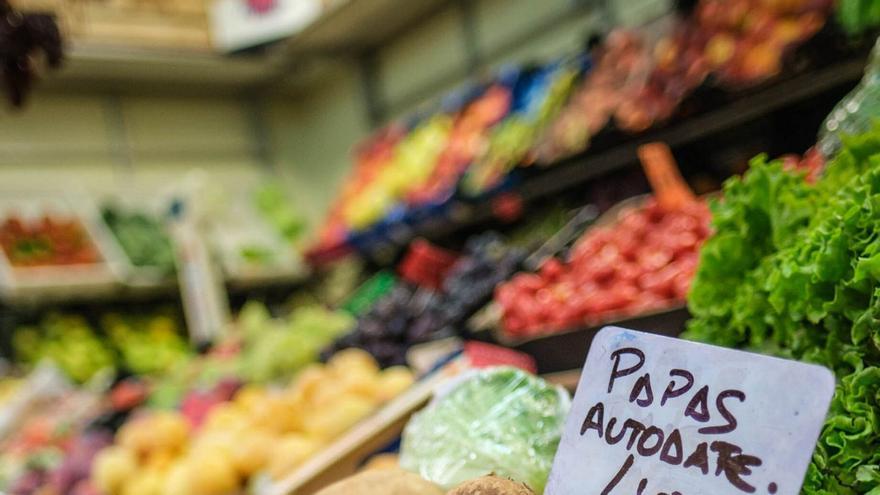
It is not only the fault of the closure of the English market due to the Colorado beetle infestation. The crisis of the common potato, which has caused a rise in prices and an unprecedented shortage of this star product of the Canarian diet in the Tenerife markets, is also due to the fall this year in local potato production, a sector which had already been affected by the progressive loss of cultivated area. The havoc caused by extreme heat has taken its toll on northern potatoes. In municipalities such as La Orotava, Los Realejos or San Juan de la Rambla, cradles of Tenerife potatoes, the June and July harvests have lost up to 80%.
It is very difficult to find Canarian potatoes in the markets and small stalls on the Island, waiting for the harvest at the end of the year to arrive. Added to this is that the imported one is also in short supply due to the closure of the main supplier of Canary Islands: England. The most abundant and cheapest product on the Islands is on its way to becoming a luxury available to very few, with prices that in some places, such as the La Laguna Market, have quadrupled, going from between 1.5 and 1.8 euros per kilo at between 4.5 and 4.8. The problem is hitting the kitchens of the islanders, accustomed to using the tubers in most of their typical dishes, from the wrinkled potatoes with mojo to the salad.
The potato is the third most important crop in Tenerife, only surpassed by vineyards and bananas, although in the midland areas it is one of the crops with the greatest economic relevance, especially on the northern slope. According to the 2021 crop map of the Island, there are 1,745 hectares dedicated to potatoes, which represents, according to the Tenerife Crop Plan, 9.3% of the total planted area. More information: average yields are around 18,000 kilos per hectare. In 2020, 43.1 million kilos were produced, of which ten were sold through potato cooperatives, two million through Mercatenerife and the rest through sales through other channels.
High temperatures, associated with climate change in the hottest year since meteorological records began (1960), have reduced the harvest to only 40% of what was planted, 20% in the case of northern Tenerife. The Association of Farmers and Ranchers of the Canary Islands (Asaga) hopes that the implementation of measures to encourage the cultivation of potatoes in the midlands will at least allow the surface area in the Canary Islands to not continue to decline as it has until now. In 2021, 4,048 hectares were registered (2,638 hectares irrigated and 1,410 dry land), 1,461 hectares less than in 2015. It must be taken into account that the Archipelago is the community in which potatoes are consumed the most in all of Spain. The latest reports point to an average purchase per islander of 30-32 kilos per year.
The last blow to the potato market came in mid-July, when the Department of Environment, Food and Rural Affairs (Defra) of the British Government reported the detection of an outbreak of the Colorado beetle in the county of Kent. Days later an adult specimen was found on a farm in Hampshire. In mid-August, Defra issued a warning to farmers and the public when other specimens were detected in Hampshire. This insect does not threaten people’s health but it does threaten crops. The plague was first detected in 1811 in the United States. From there it spread to Canada, Europe and Asia. He entered Europe through France in 1921.















